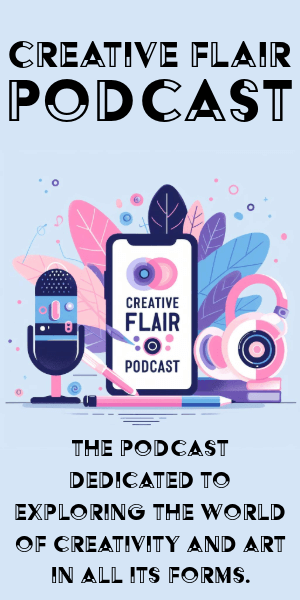Selling Digital Art Products
Digital artists have numerous opportunities to turn their creativity into income. Creating digital art products like prints, printables, and digital assets opens new revenue streams.
Prints allow artists to make their work accessible to wider audiences. Whether it's colorful abstracts or serene landscapes, prints can cater to various tastes. On platforms like Etsy, artists can connect with art enthusiasts who appreciate handcrafted quality.
Printables, including calendars, planners, and art for home decor, offer practical utility while showcasing artistic talent. Artists can adapt these to seasonal themes or special events, tapping into cyclical consumer interests.
Digital assets, like clip art, digital brushes, and textures, appeal to graphic designers and digital creators. Platforms like Redbubble allow artists to put their designs on various products, from phone cases to tote bags.
Selling these products requires more than just artistic talent. Artists should focus on creating cohesive collections that tell a story or evoke a particular emotion. Understanding the marketplace is crucial. On Etsy, for example, using the right keywords is important for visibility.
Engaging with customer feedback can help artists refine their approach. While creativity is key, some marketing know-how can help elevate a collection from obscurity to desirability.
Licensing and Commissions
Licensing artwork for commercial use or taking on commissions can be both exciting and profitable for digital artists. These avenues not only boost income but also increase exposure.
Licensing can lead to artwork appearing on product packaging or in ad campaigns. It can provide both one-time fees and ongoing royalties. Commissions allow artists to blend their personal style with a client's vision.
To attract clients, artists should leverage social media and create a strong portfolio. Engaging with creative communities online and offline can also help build connections.
When negotiating with clients, it's important to set clear boundaries and expectations from the start. This includes:
- Timelines
- Usage rights
- Payment terms
Protecting your work with clear contracts is essential to avoid misunderstandings.
Remember that each deal is part of your artistic journey. By licensing work and accepting commissions, you're sharing your creative vision with a wider audience.
Building a Digital Art Business
Creating a successful digital art business requires balancing artistic skills with business acumen. It's about finding strategies that allow your unique perspective to flourish while generating sustainable income.
Setting up an online store is a crucial first step. Platforms like Shopify or Squarespace offer user-friendly interfaces for showcasing your work. The goal is to create an engaging storefront that provides a seamless experience for customers.
Print-on-demand services like Society6 or Printful can simplify logistics, allowing you to focus on creation. These services let you offer your art on a range of products without managing inventory or shipping.
Marketing is key to making your voice heard in the digital world. Share behind-the-scenes glimpses, tell stories about your inspiration, and engage with your audience through blogs, newsletters, and social media.
Defining your niche can help guide your marketing efforts and connect you with the right audience. Embrace feedback from consumers to improve your offerings and understand what resonates with your audience.
Building a digital art business is an ongoing journey of discovery. Each sale, commission, and interaction contributes to the growth of your artistic career.
Monetizing Through Online Courses
Teaching online courses offers digital artists another avenue to share their skills and generate income. Platforms like Udemy and Skillshare provide spaces for artists to showcase their expertise and mentor aspiring talent.
When creating a course, focus on crafting a curriculum that covers both basics and nuances of your style. Share personal anecdotes and creative challenges to make your lessons relatable and memorable.
High-quality videos with clear visuals and engaging narration are essential. Consider using screencasts to demonstrate your creative process step-by-step. Include interactive elements like practical assignments to keep students engaged.
When pricing your course, research comparable offerings and consider the platform's pricing structure. Market your courses through your existing networks and online communities. Create teasers or mini-lessons to attract potential students.
Remember to gather and respond to student feedback. Use this input to refine your courses and keep your content relevant and impactful.
By sharing your knowledge through online courses, you not only create a new income stream but also contribute to the growth of the digital art community.
Leveraging Social Media and Crowdfunding
Social media platforms offer digital artists spaces to showcase their work and connect directly with potential buyers and supporters. Each platform has its strengths:
- Instagram for visual showcases
- Twitter for conversations and art challenges
Engagement is key on social media. Respond to comments, participate in discussions, and collaborate with other creators to expand your reach. These interactions can turn followers into loyal supporters invested in your artistic journey.
Crowdfunding platforms like Patreon and Kickstarter allow artists to deepen engagement with supporters. Patreon enables subscription-based models where patrons receive exclusive content. Kickstarter is ideal for launching specific projects with compelling campaigns.
Both social media and crowdfunding transform the artist-audience relationship from passive consumption to active participation. Followers become backers and ambassadors, amplifying the artist's voice through organic sharing.
Navigating these platforms requires a strategic approach, combining visually appealing content with authentic interactions. It's about building a brand that resonates with your audience and creates a supportive community around your art.
Every step in the digital art journey is a chance to connect with others, transforming passion into a shared experience. Whether it's through selling, teaching, or engaging with audiences, each action weaves creativity into everyday life.
- MarketResearch.biz. Global AI in Art Market Report 2023.
- Udemy. AI Art Midjourney Passive Income: Make and Sell Arts Course Description.
- Udemy. DALL-E and Others: Arts Generation Insider Tips and Tricks Course Description.
























